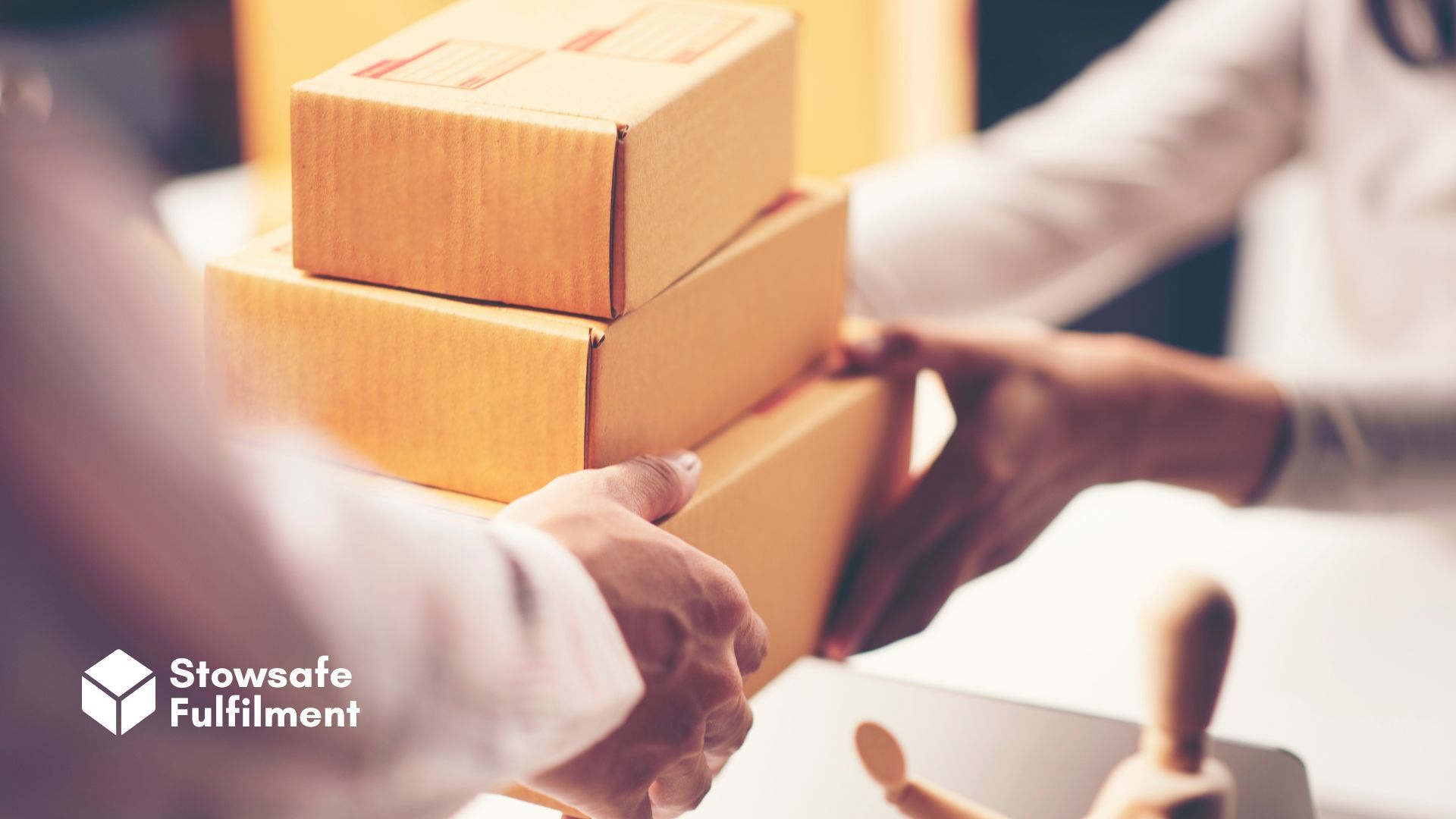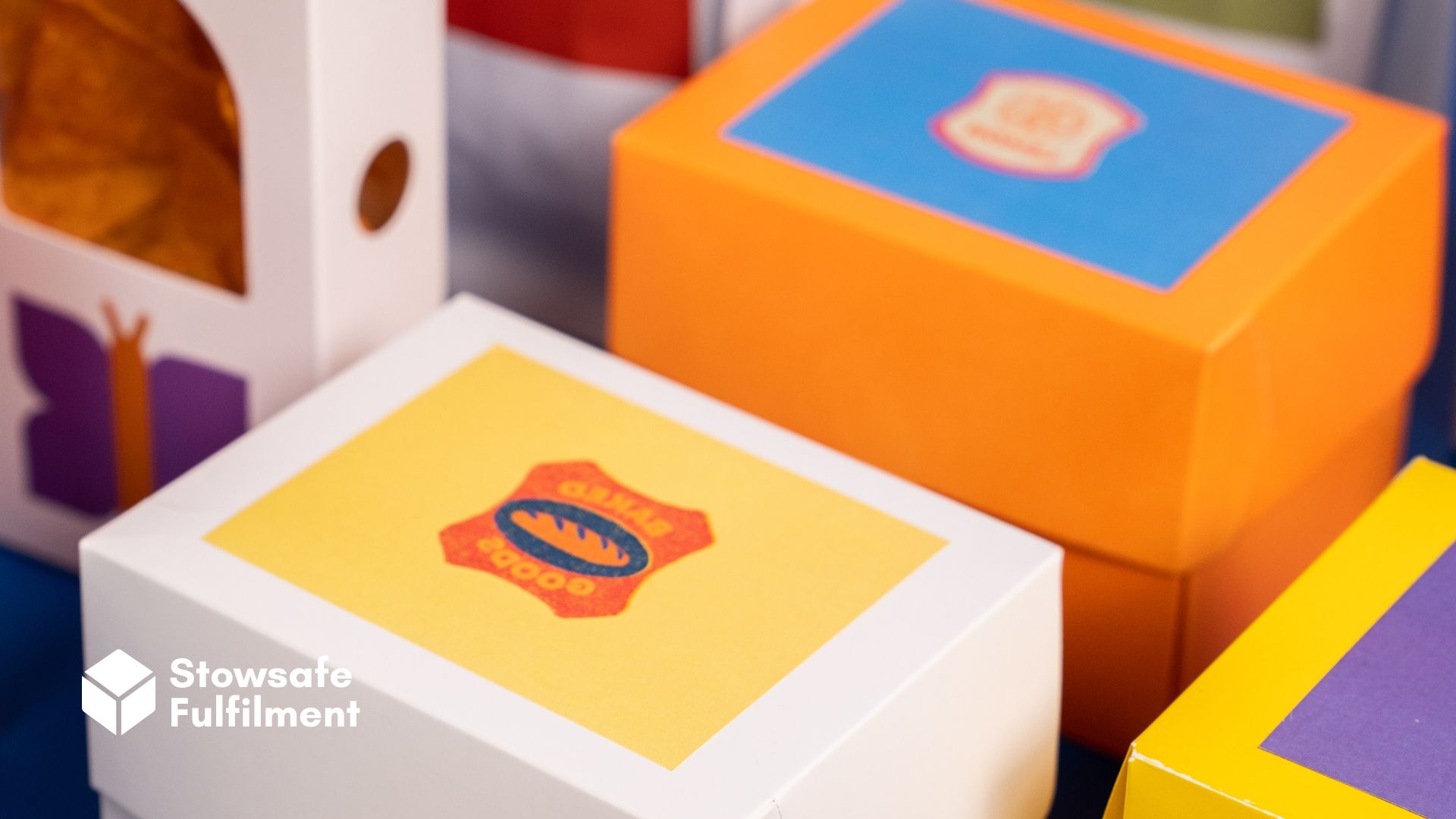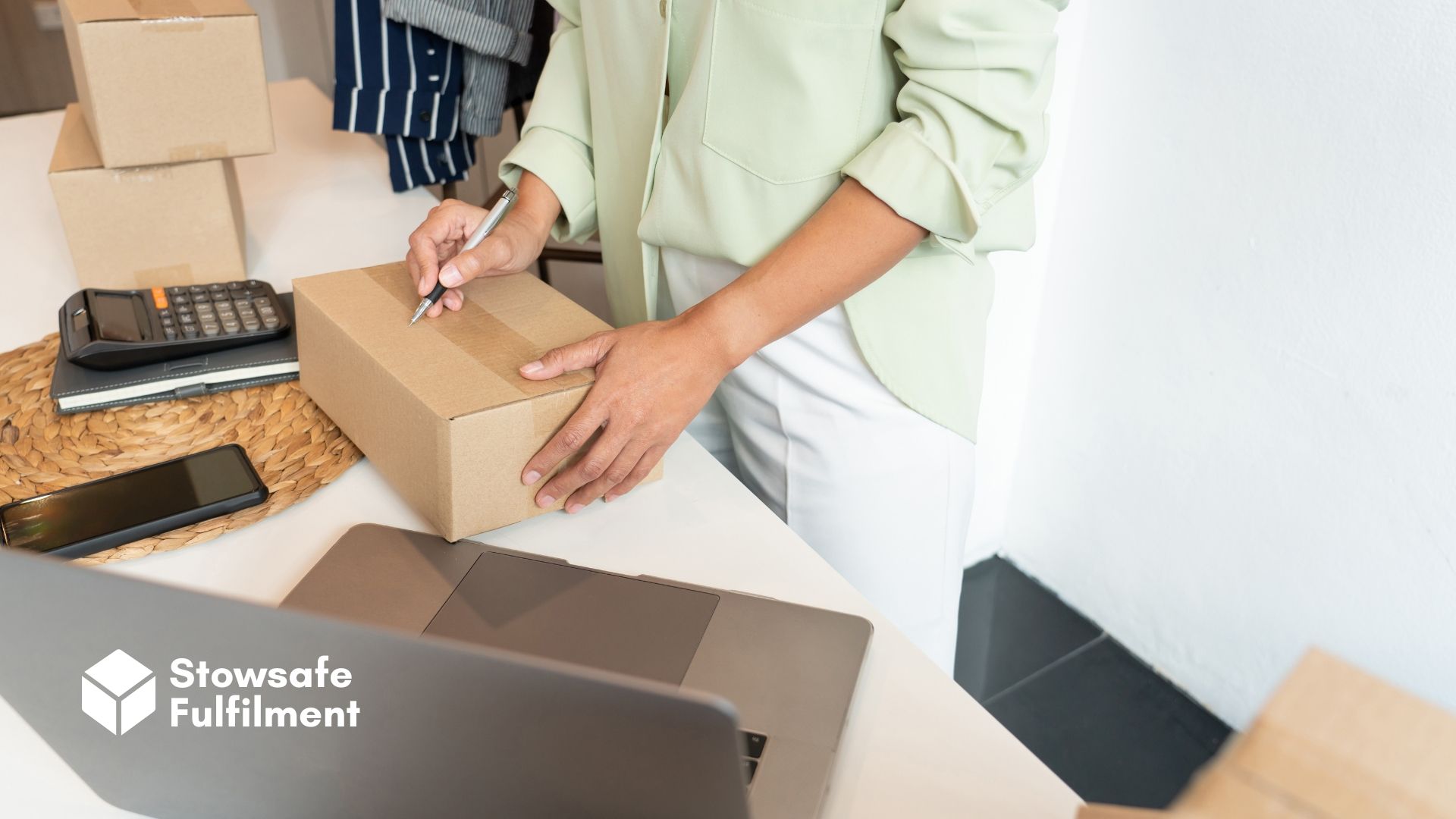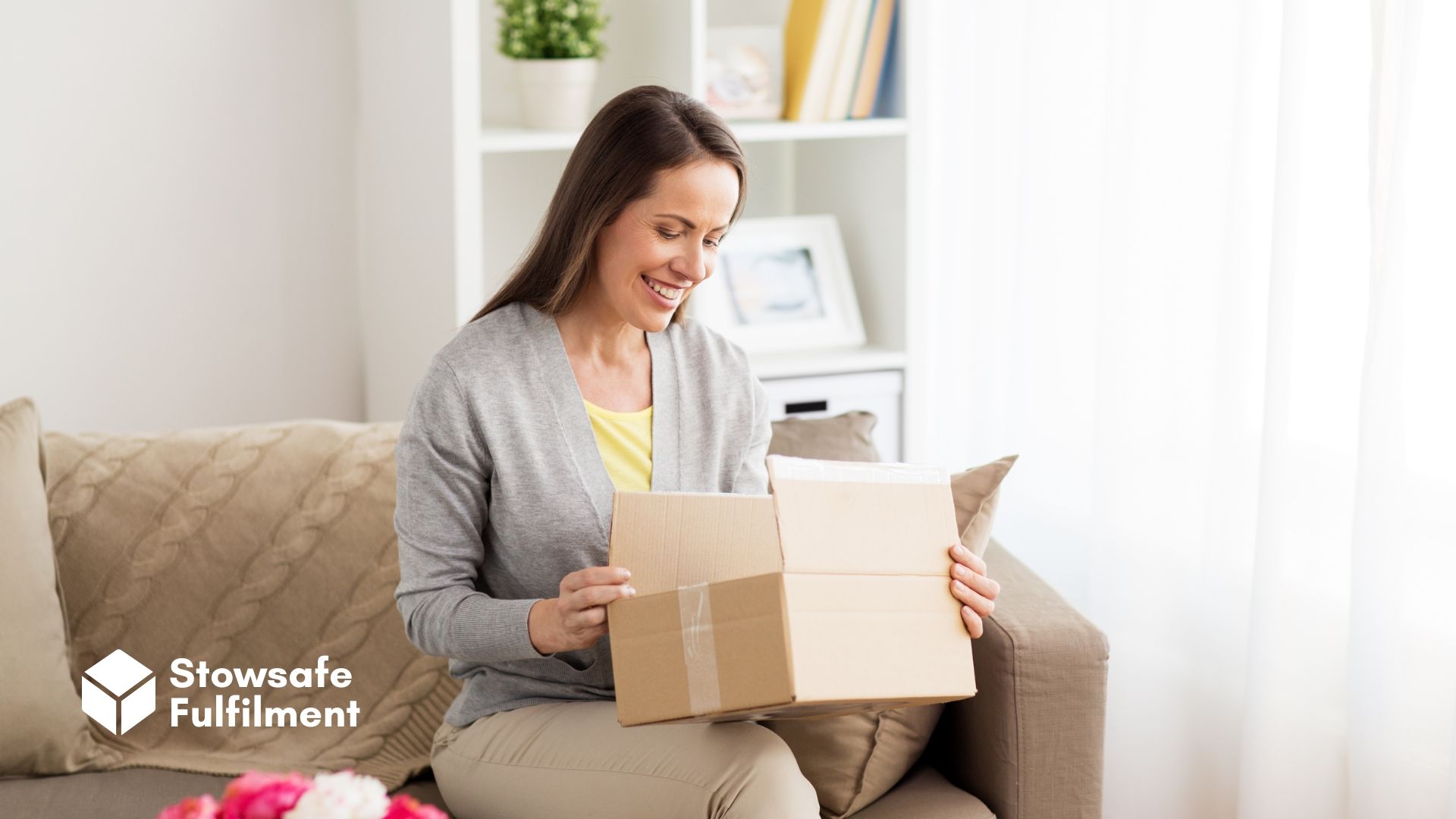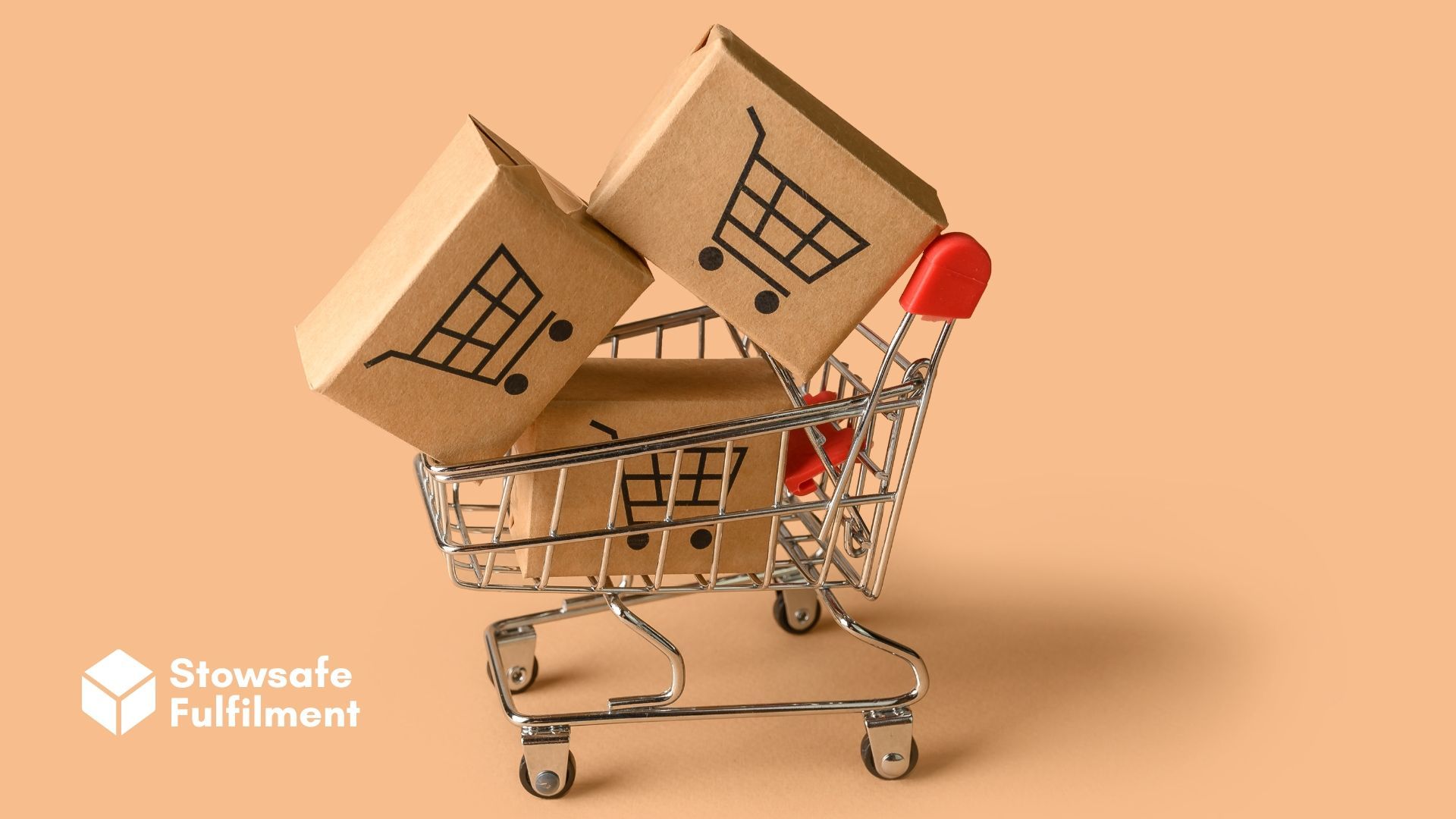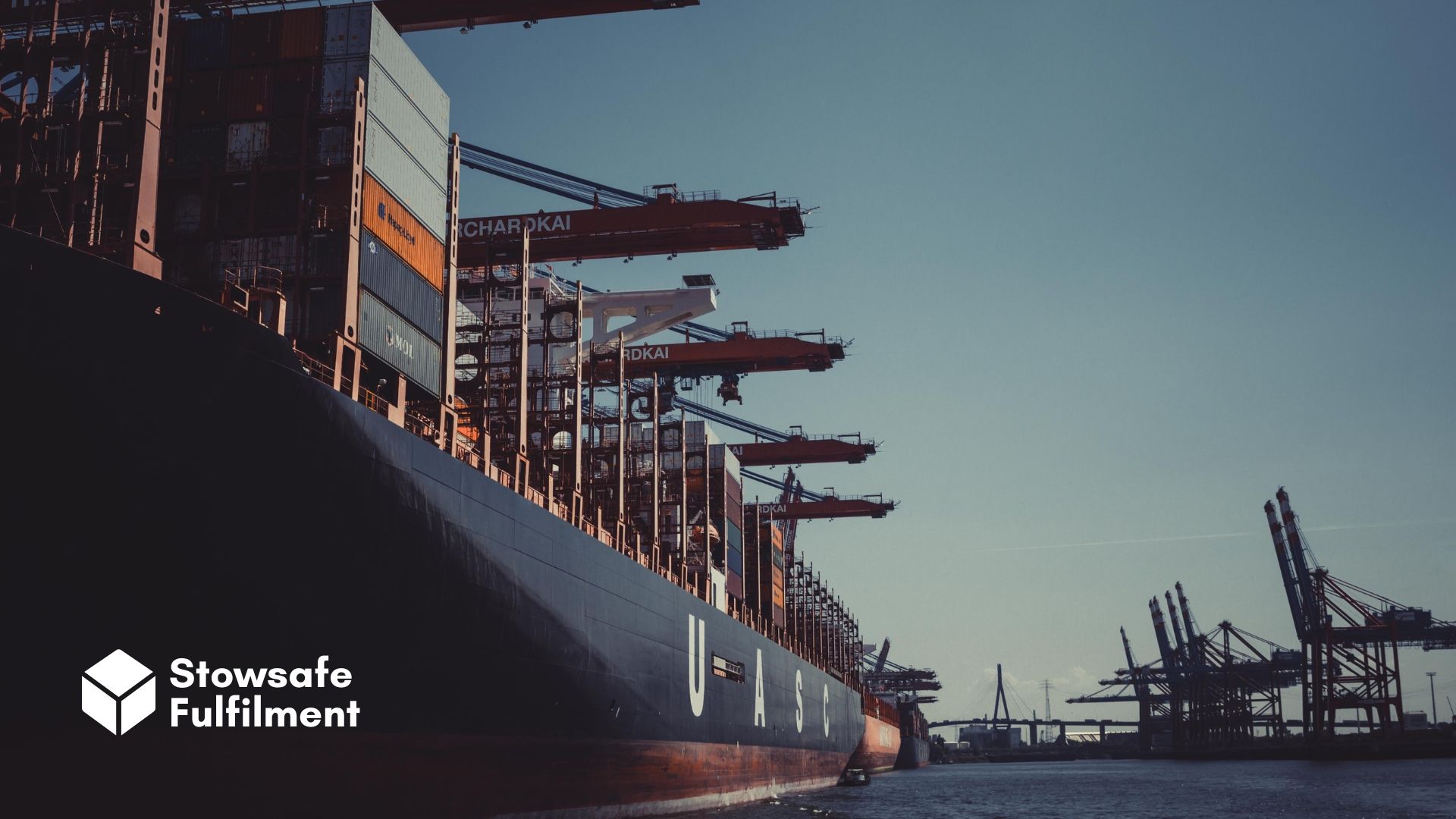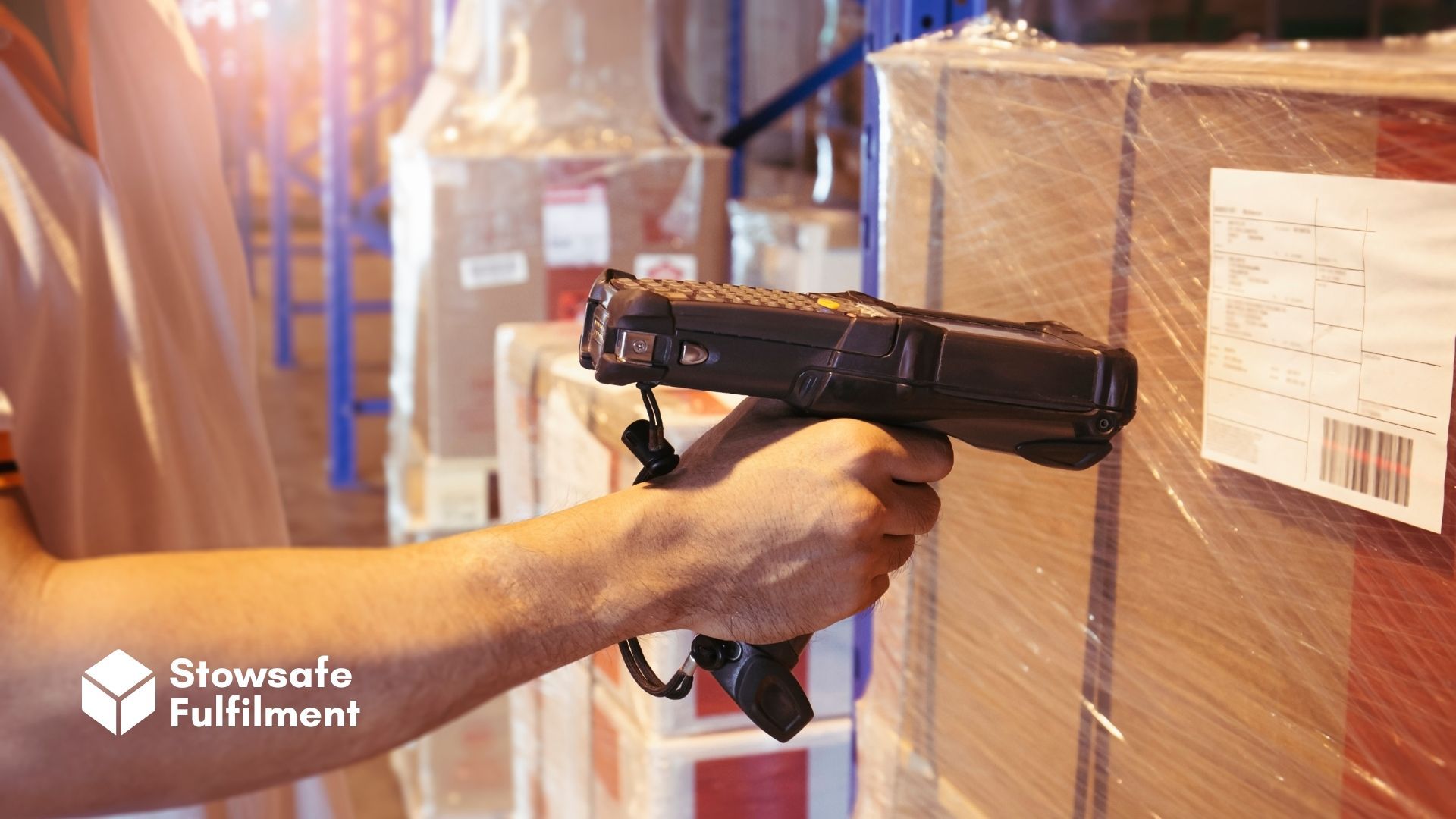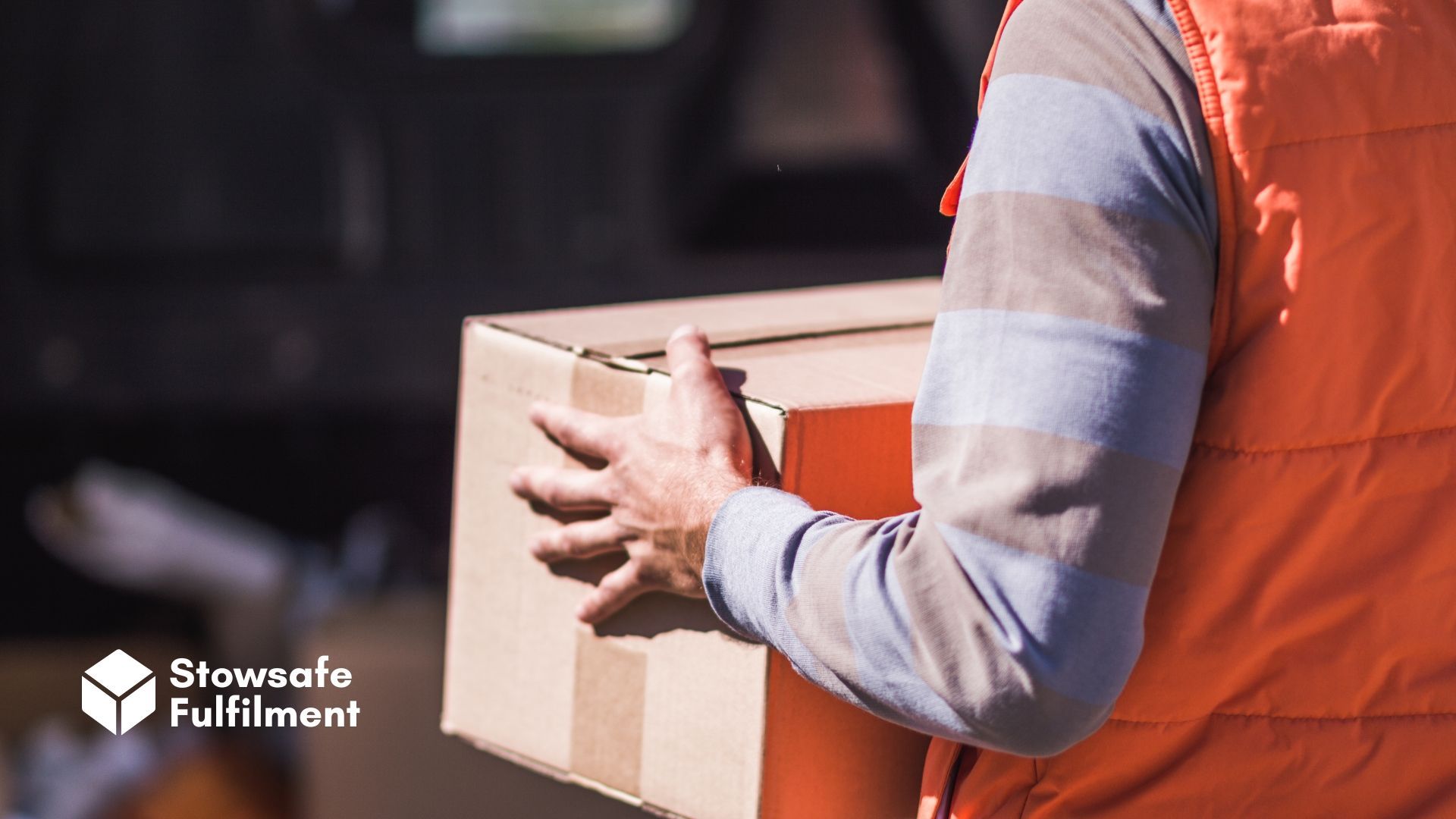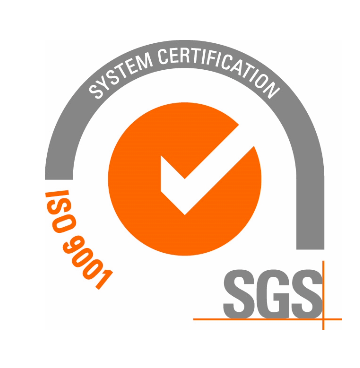Which fulfilment method is right for you? Learn the benefits and disadvantages of the big 4 in our guide.
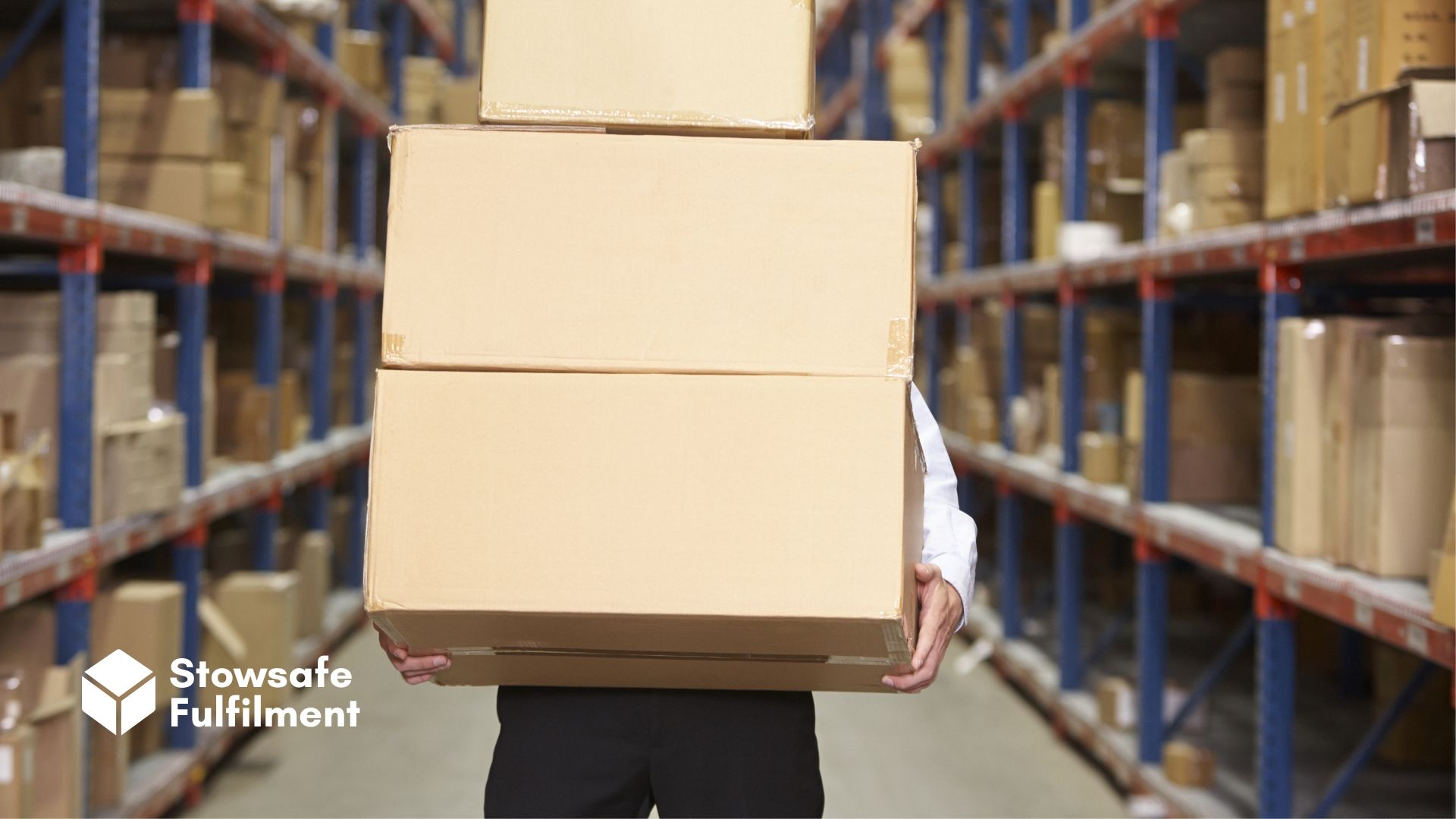
If you sell physical goods online, you need some kind of fulfilment process. It's an unavoidable certainty – like death, taxes and bad Christmas number ones.
Maybe you sell self-help books. Or stickers. Or scented candles. In any case, you need a way to get product A from warehouse B to customer C.
So far, so eCommerce 101. But if you're just starting out, you might be surprised to learn that there's more than one way to crack the fulfilment nut.
In this article, we look at four of the most common and weigh up their perks and particulars.
Types of eCommerce fulfilment
1. In-house fulfilment
In-house fulfilment is just what it sounds like. You pick, pack and ship products to customers yourself.
This is where most people start: surrounded by sticky tape, shipping labels and parcels – all bound for the nearest Post Office.
In-house fulfilment suits burgeoning businesses. If you're selling six scented candles a week, you probably don't need help fulfilling orders. You can handle it all in your spare room or garage – and, besides, you couldn't afford to hire external help anyway.
In-house fulfilment also suits certain big brands. Can you afford to rent (or buy) warehouse space and fill it with shelving, stock and helping hands? Great! In-house fulfilment will put you firmly in charge.
For these kinds of businesses, in-house fulfilment offers a level of control, insight and agility that other fulfilment providers might struggle to match.
So, in-house fulfilment works well for greenhorns and old-timers. The problems start when you fall between these two extremes.
Let's say your scented candle business is taking off. Big time. People love your delicious, innovative fragrances (apple pie and patchouli, anyone?) and they're flying out the door almost as fast as you can make them.

It's time to grow. But growth takes time – and money.
Your spare room is creaking under the weight of your outbound parcels. But you don't yet have the capital to hire warehousing space or platoons of part-time workers.
Congratulations – you've reached the point where you might want to consider outsourcing your fulfilment to a third party.
2. Third-party fulfilment
Third-party fulfilment is sometimes known as outsourced fulfilment or third-party logistics.
It works like this. You send your stock to a trusted third-party logistics provider (3PL). Once your products are safely stowed, it picks, packs and dispatches them to customers as orders come through.
3PLs work from big warehouses that are already kitted out for order fulfilment. They have the staff, the shelving and the savoir-faire to handle all the faff of fulfilment for you.
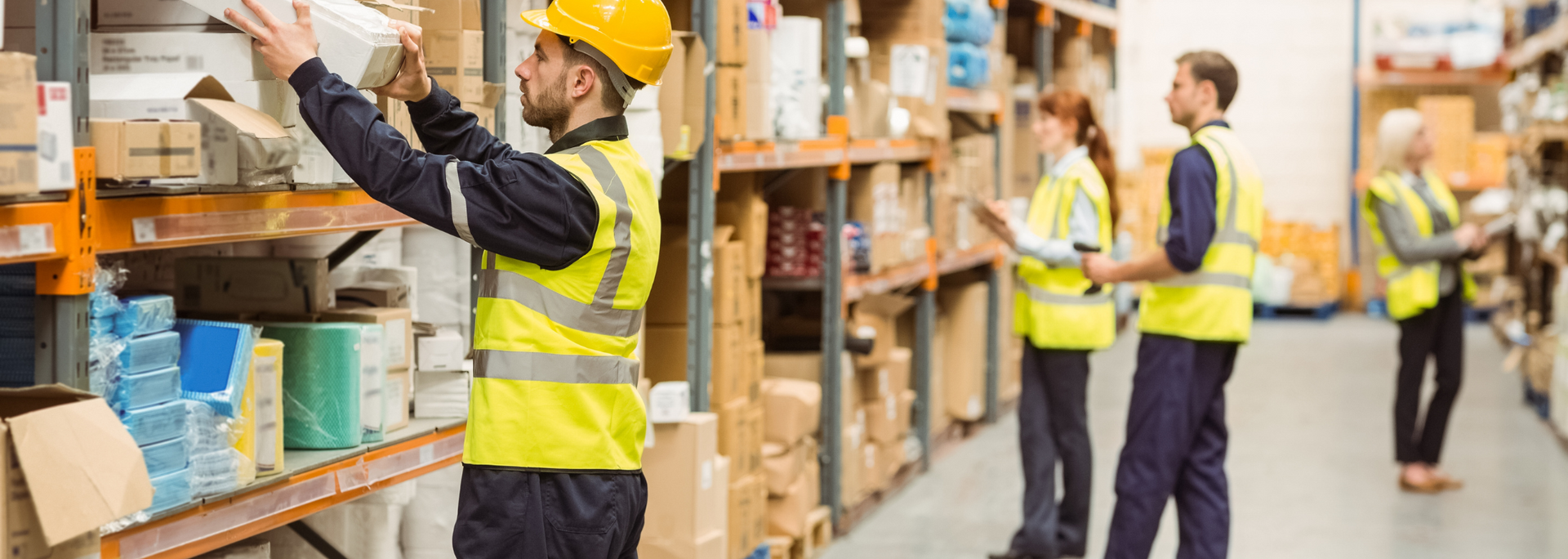
This all works because of a clever piece of software called a warehouse management system (WMS). A good WMS will integrate with your chosen eCommerce platform to allow for fast and frictionless delivery.
Say you use Shopify. If the 3PL's WMS integrates with Shopify, it means they'll be notified as soon as a customer places an order on your website. This process is invisible to customers – but it's a huge time gain for shop owner and 3PL alike.
The headline benefits are clear. Partnering with a 3PL means freeing up time and space to focus on other things – things like growing your brand, running your business and getting more than four hours of sleep each night.
And all for a small monthly fee. Bargain!
Of course, there are caveats. One oft-cited downside of third-party fulfilment is that you lose some level of control over the fulfilment process.
Maybe customers love your scented candles – at least in part – because of the effort you put into packaging them. Those handwritten "Thank you" notes and free badges work wonders for building customer engagement and trust.
It's true that
some 3PLs will suck the soul out of your packaging and deliver a bland, uninspiring experience for customers. But that's only the bad ones.
If your way of doing things is close to your heart, it's important to choose a fulfilment company that offers a fully bespoke service. A good provider will work hard to deliver the same unique, personalised experience that you've built your brand upon – and customers have come to expect.
3. Dropshipping
In-house fulfilment is very hands-on. Third-party fulfilment is somewhat hands-off – like letting someone else drive but calling out directions from the passenger seat.
Dropshipping is almost
entirely
hands-off. With dropshipping, you're not in the passenger seat anymore. You're not even in the car.
On the surface, it might seem similar to third-party fulfilment. You identify a product, then you pay a warehouse to stock, pick and ship that product. Bish, bash, bosh.
The big difference is that dropshippers
never handle the product itself. Some people who run dropshipping businesses have probably never even
seen
the products they promote. The products go straight from the manufacturer to the warehouse to the customer.
Another difference hinges on location. With third-party fulfilment, you create another link in your local supply chain. But dropshipping warehouses are usually located relatively close to the point of manufacture – and typically send their products to customers who live halfway around the world.
The dropshipper isn't just twiddling their thumbs, though. They handle the marketing side of things: building a website, creating videos and writing sparkling product copy that appeals to their local customer base.
This might sound tantalisingly easy – and, indeed, dropshipping is often promoted as a low-effort get-rich-quick scheme by online grifters.
But there's a huge trade-off: lack of control.
While third-party fulfilment can make you feel managerially adrift if you partner with a
bad
3PL, dropshipping makes any quality issues all but impossible to rectify.
Are customers complaining that the product isn't fit for purpose? Are they moaning about the fact they waited three weeks for their package to arrive, only to be presented with a bashed-up, sorry-looking box?
Good luck fixing that. These issues are all but systemic in dropshipping.
The alternative is to take more control of the product and the delivery process. There's a name for that – it's called "third-party fulfilment".
4. Hybrid fulfilment
Finally, let's take a quick look at hybrid fulfilment.
Hybrid fulfilment refers to any fulfilment strategy that uses a mix of models: in-house, third-party or dropshipping.
This mode is becoming more common as businesses look for strategic ways to meet ever-increasing customer expectations.
How does it work? Well, that depends on what you want to achieve.
You could, for instance, use a different fulfilment method for different SKUs. Perhaps you could save space by dropshipping low-value, high-volume SKUs, while you handle slow-moving stock in-house.
Or maybe you need to split SKUs by type based on their storage requirements. You could, for instance, fulfil most of your orders yourself but use a specialised, third-party
food storage warehouse for perishable goods.
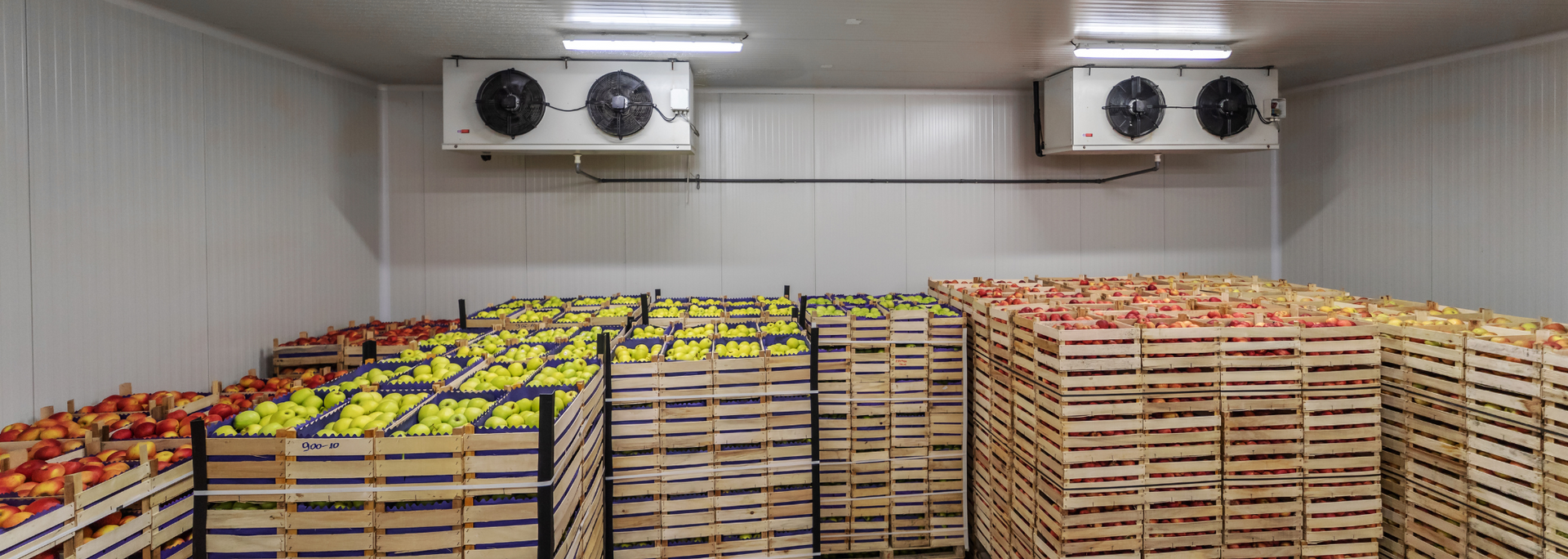
Then there's regional fulfilment. This is a related model that sees retailers call on 3PLs to act as regional "hubs", allowing them to accelerate last-mile delivery times for customers in far-flung locations.
Hybrid fulfilment is flexible. Done well, it can add up to smoother inventory management, faster deliveries and the freedom to explore new product categories.
However, it requires careful planning and a watchful eye. More complexity almost always means more risk – so it's important to choose your friends wisely.
It all comes down to communication. If your 3PL is willing to make adjustments to make it work – and offers the flexibility to scale your operations as needed – then you may be onto a winner.
Are you looking for a trusted 3PL to help your brand grow? Our
eCommerce fulfilment services are built around you – and we provide a dedicated account manager for each and every client. Interested?
Let's talk.
All Rights Reserved | Stowsafe Fulfilment


